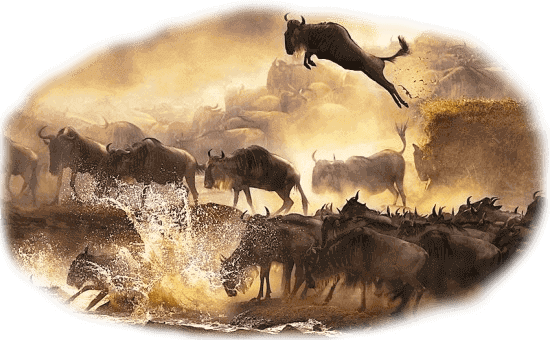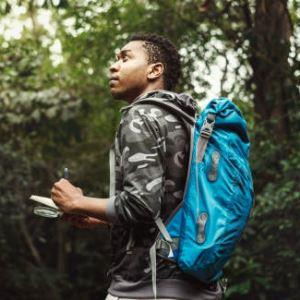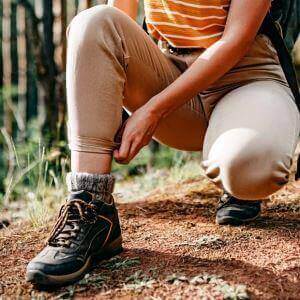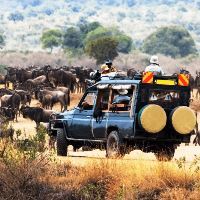 Kenya remains one of Africa's most iconic travel destinations, and for Dutch tourists seeking a blend of adventure, culture, and natural beauty, it delivers on every front. From sweeping savannahs filled with wildlife to pristine beaches and deeply rooted traditions, the country offers a memorable holiday for every type of traveler. Start your journey in the heart of Kenya's famed safari circuit. The Masai Mara National Reserve is a world-renowned destination, particularly popular between July and October during the Great Wildebeest Migration. This spectacle is a top reason why many Dutch travelers choose Kenya for their safari adventures. Amboseli National Park, known for its large elephant herds and backdrop of Mount Kilimanjaro, provides a stunning contrast to the rolling grasslands of the Mara. For those wanting a quieter experience, Samburu National Reserve in northern Kenya features unique wildlife and a rich cultural backdrop. These are some of the best safari destinations in Kenya for Dutch tourists. Beyond wildlife, Kenya's coastline is a paradise of sun, sand, and sea. Diani Beach, just south of Mombasa, boasts powder-white sands and a vibrant selection of resorts and beach activities. For marine life lovers, Watamu and Malindi offer excellent opportunities for snorkeling and diving, with coral reefs teeming with colorful fish. Lamu Island, a UNESCO World Heritage Site, offers something different winding alleys, traditional dhow boats, and a culture untouched by time. The coastal experience is perfect for Dutch tourists seeking a warm-weather escape that combines relaxation with cultural intrigue. Kenya holds deep appeal for curious minds. The Karen Blixen Museum in Nairobi brings to life the setting of "Out of Africa," a narrative that continues to captivate European audiences. Fort Jesus in Mombasa tells the story of centuries of Portuguese and Arab influence and serves as a fascinating stop for history enthusiasts. Nearby, the Bomas of Kenya offers vibrant dance performances and traditional homesteads that showcase the diversity of Kenya’s ethnic groups. These cultural landmarks not only entertain but also educate, making them favorites among Dutch visitors. Kenya’s charm lies in its remarkable diversity, offering a harmonious blend of high-energy safaris, serene coastal retreats, and rich cultural immersion. This East African gem appeals to a broad range of interests, making it a perfect destination for Dutch travelers looking for both adventure and relaxation. The opportunity to witness majestic wildlife in their natural habitat, walk along sun-kissed beaches, and engage with ancient traditions makes Kenya stand out from other destinations. For Dutch visitors, the experience is further enhanced by Kenya's welcoming hospitality and well-developed tourism infrastructure. Safari lodges offer comfort in the wild, coastal resorts deliver luxury beside the ocean, and guided tours bring the country's history and heritage vividly to life. You can spend one day tracking lions on the savannah and the next exploring the winding alleys of Lamu Island or enjoying Swahili cuisine under the stars. Whether you're a nature lover fascinated by elephants and cheetahs, a history buff intrigued by colonial landmarks and local folklore, or simply a beach enthusiast chasing sunsets over the Indian Ocean, Kenya promises an experience that's both authentic and unforgettable. This destination ensures that every Dutch traveler returns home with lifelong memories and a deeper connection to Africa's magic.
Kenya remains one of Africa's most iconic travel destinations, and for Dutch tourists seeking a blend of adventure, culture, and natural beauty, it delivers on every front. From sweeping savannahs filled with wildlife to pristine beaches and deeply rooted traditions, the country offers a memorable holiday for every type of traveler. Start your journey in the heart of Kenya's famed safari circuit. The Masai Mara National Reserve is a world-renowned destination, particularly popular between July and October during the Great Wildebeest Migration. This spectacle is a top reason why many Dutch travelers choose Kenya for their safari adventures. Amboseli National Park, known for its large elephant herds and backdrop of Mount Kilimanjaro, provides a stunning contrast to the rolling grasslands of the Mara. For those wanting a quieter experience, Samburu National Reserve in northern Kenya features unique wildlife and a rich cultural backdrop. These are some of the best safari destinations in Kenya for Dutch tourists. Beyond wildlife, Kenya's coastline is a paradise of sun, sand, and sea. Diani Beach, just south of Mombasa, boasts powder-white sands and a vibrant selection of resorts and beach activities. For marine life lovers, Watamu and Malindi offer excellent opportunities for snorkeling and diving, with coral reefs teeming with colorful fish. Lamu Island, a UNESCO World Heritage Site, offers something different winding alleys, traditional dhow boats, and a culture untouched by time. The coastal experience is perfect for Dutch tourists seeking a warm-weather escape that combines relaxation with cultural intrigue. Kenya holds deep appeal for curious minds. The Karen Blixen Museum in Nairobi brings to life the setting of "Out of Africa," a narrative that continues to captivate European audiences. Fort Jesus in Mombasa tells the story of centuries of Portuguese and Arab influence and serves as a fascinating stop for history enthusiasts. Nearby, the Bomas of Kenya offers vibrant dance performances and traditional homesteads that showcase the diversity of Kenya’s ethnic groups. These cultural landmarks not only entertain but also educate, making them favorites among Dutch visitors. Kenya’s charm lies in its remarkable diversity, offering a harmonious blend of high-energy safaris, serene coastal retreats, and rich cultural immersion. This East African gem appeals to a broad range of interests, making it a perfect destination for Dutch travelers looking for both adventure and relaxation. The opportunity to witness majestic wildlife in their natural habitat, walk along sun-kissed beaches, and engage with ancient traditions makes Kenya stand out from other destinations. For Dutch visitors, the experience is further enhanced by Kenya's welcoming hospitality and well-developed tourism infrastructure. Safari lodges offer comfort in the wild, coastal resorts deliver luxury beside the ocean, and guided tours bring the country's history and heritage vividly to life. You can spend one day tracking lions on the savannah and the next exploring the winding alleys of Lamu Island or enjoying Swahili cuisine under the stars. Whether you're a nature lover fascinated by elephants and cheetahs, a history buff intrigued by colonial landmarks and local folklore, or simply a beach enthusiast chasing sunsets over the Indian Ocean, Kenya promises an experience that's both authentic and unforgettable. This destination ensures that every Dutch traveler returns home with lifelong memories and a deeper connection to Africa's magic.
Top Tourist Attractions in Kenya for Dutch Travelers at a Glance
| Attraction Name | Location | Highlight | Best Time to Visit |
|---|---|---|---|
| Masai Mara National Reserve | Narok County | Wildebeest migration, Big Five | July to October |
| Amboseli National Park | Kajiado County | Mount Kilimanjaro views, elephants | June to October |
| Samburu National Reserve | Samburu County | Unique northern wildlife species | June to September |
| Diani Beach | Kwale County | White sand beaches, water sports | December to March |
| Watamu Marine Park | Kilifi County | Coral reefs, snorkeling, diving | January to April |
| Lamu Island | Lamu County | Swahili culture, historic charm | November to March |
| Fort Jesus | Mombasa County | Portuguese-era fort, museum | Year-round |
| Karen Blixen Museum | Nairobi County | Colonial history, literary interest | Year-round |
| Bomas of Kenya | Nairobi County | Traditional dance and culture | Year-round |
Best Wildlife Safari Parks in Kenya for Dutch Nature Lovers
Kenya is one of Africa’s top wildlife destinations and offers an unmatched safari experience for travelers from the Netherlands. Whether you’re dreaming of lion sightings at dawn or panoramic views of Mount Kilimanjaro while watching elephants roam, Kenya delivers on every front. For Dutch nature lovers, the country presents a variety of national parks and reserves, each with its unique landscape, ecosystem, and wildlife. The Masai Mara National Reserve is perhaps the most iconic and frequently visited park. It’s especially popular from July to October when the Great Wildebeest Migration sweeps across the plains in dramatic fashion. Visitors can expect to see not only wildebeests but also the Big Five: lions, elephants, buffaloes, leopards, and rhinos. The open savannahs, guided game drives, and luxury tented camps make this a bucket-list destination. Amboseli National Park, located at the foot of Mount Kilimanjaro, offers a different but equally captivating experience. Famous for its large herds of elephants, the park also provides excellent views of Africa’s tallest mountain, especially during early morning hours. Bird watchers and photographers will find Amboseli particularly rewarding thanks to its rich biodiversity and scenic beauty. For a more off-the-beaten-path adventure, Dutch travelers can explore Samburu National Reserve in northern Kenya. This semi-arid region features unique species not commonly found elsewhere, such as the Grevy’s zebra, reticulated giraffe, and Somali ostrich. The Ewaso Ng’iro River runs through the reserve, attracting wildlife and creating ideal game-viewing conditions. Cultural interactions with the Samburu people, who are closely related to the Maasai, add depth and meaning to the experience. Tsavo East and Tsavo West National Parks, collectively one of the largest protected wildlife areas in the world, also offer unforgettable safari experiences. These parks are home to red elephants, lions, and even ancient lava flows. Their size and diversity make them an excellent choice for those who prefer a more remote and extensive exploration of Kenya’s natural heritage. Dutch tourists will appreciate that many parks are accessible via short domestic flights or scenic road trips, with a wide range of accommodations available from budget-friendly lodges to luxury camps. A safari in Kenya is not just about wildlife; it’s about witnessing the circle of life unfold in a breathtaking environment. From the savannahs of the Masai Mara to the semi-deserts of Samburu and the wetlands of Amboseli, Kenya’s natural beauty offers a diverse and captivating experience for any traveler. Dutch tourists, in particular, will find the contrast between these varied landscapes both refreshing and enriching. Whether it's the iconic image of wildebeests sweeping across the plains, elephants silhouetted against the snow-capped Mount Kilimanjaro, or the rare northern species of Samburu grazing near the riverbanks, every corner of Kenya tells a unique story of nature. These experiences are not just about sightseeing; they connect travelers with the rhythm of the wild, the pulse of the environment, and the cultural heart of the communities that live alongside these reserves. Local guides share indigenous knowledge and folklore, making each game drive more than just a photo opportunity it becomes a window into Africa’s soul. Accessibility from the Netherlands is straightforward, with international flights to Nairobi and Mombasa serving as gateways to these natural treasures. These are the top national parks in Kenya to visit from the Netherlands for anyone seeking an unforgettable African adventure filled with wildlife, culture, and natural wonders.
Where to See the Big Five and Wildebeest Migration in Kenya
Kenya is a premier destination for Dutch travelers eager to experience Africa's famed Big Five and the awe-inspiring Wildebeest Migration. The Masai Mara National Reserve stands out as one of the most spectacular wildlife destinations on the continent. It offers front-row seats to the annual migration, where millions of wildebeests, zebras, and antelopes cross the plains in search of greener pastures. This phenomenon is best witnessed between July and October and is often described as one of the greatest shows on earth. Apart from the migration, the Masai Mara is teeming with wildlife year-round. Visitors can expect to see lions, cheetahs, elephants, and even elusive leopards during a single game drive. Guided safaris ensure that travelers learn about the animals' behaviors and the delicate ecosystems that support them. Amboseli National Park is another must-visit for those looking to spot large elephant herds with Mount Kilimanjaro as a scenic backdrop. The snow-capped mountain creates a striking contrast against the golden savannah, offering photographers and nature lovers the perfect setting for unforgettable moments. Amboseli is also home to more than 400 bird species, making it a bird-watching paradise throughout the year. Visitors can observe flamingos, pelicans, and countless other species in the park's wetlands and seasonal lakes. In addition to its wildlife, Amboseli offers a more relaxed and intimate safari experience compared to the busier parks. Game drives here tend to be quieter, allowing travelers to fully absorb the sights and sounds of nature. The park also presents opportunities to visit local Maasai communities, where Dutch tourists can learn about traditional customs and ways of life. For a more rugged and adventurous safari, Samburu National Reserve in northern Kenya is a standout choice. The region’s semi-arid environment supports rare and fascinating species such as the Grevy's zebra, reticulated giraffe, and Somali ostrich. The Ewaso Ng'iro River brings life to the landscape, attracting a variety of animals and offering spectacular game viewing. Samburu also offers rich cultural interactions with the local Samburu people, known for their vibrant attire and enduring traditions.
Top Coastal Destinations in Kenya for Dutch Beach Seekers
Kenya’s coastline along the Indian Ocean is an enchanting blend of white-sand beaches, warm waters, and centuries-old Swahili culture. For Dutch tourists craving sunshine, relaxation, and a touch of history, the coast presents the perfect combination of leisure and learning. The coastal region offers more than just scenic beauty; it is also a window into a rich and diverse heritage that continues to thrive. Diani Beach remains one of the most popular beach destinations. Its long, palm-fringed stretch of sand is ideal for sunbathing, kite surfing, and sunset walks. The area is also home to upscale resorts, beachfront restaurants, and lively local markets. Nearby, Wasini Island offers coral garden snorkeling excursions and dolphin-watching tours for those seeking marine adventures. Further north, Watamu and Malindi are gems for underwater enthusiasts. Watamu Marine National Park, a protected area filled with coral reefs and tropical fish, is perfect for diving and snorkeling. These coastal towns are also dotted with Arab-influenced architecture and historical sites like the Gede Ruins, remnants of a 13th-century Swahili town. Lamu Island provides a more immersive experience. With its narrow alleyways, traditional dhow sailing boats, and lack of cars, Lamu feels timeless. It offers an authentic slice of Swahili life and has been designated a UNESCO World Heritage Site. Here, Dutch visitors can explore historic stone houses, mosques, and bustling markets. For travelers interested in cultural enrichment, Swahili coast cultural tours in Kenya for Dutch visitors offer deep insight into the region’s way of life. These tours often include visits to local villages, cooking sessions with Swahili chefs, and workshops in traditional arts such as henna painting and wood carving. This is a unique opportunity to connect with local communities while gaining a greater appreciation of Kenya’s multicultural identity. Whether it’s lounging by the sea, diving into coral-filled waters, or walking through history-rich streets, the Kenyan coast delivers an unforgettable experience. It’s a destination that effortlessly combines leisure and culture, offering Dutch travelers a rare opportunity to unwind while also exploring a vibrant and deeply rooted cultural landscape. Beyond the beaches, Kenya’s coast invites exploration into traditional Swahili architecture, Islamic-influenced art, and the rhythmic cadence of Swahili music and dance. Strolling through coastal towns like Lamu or Malindi, visitors encounter ornate doors, coral stone buildings, and intricately woven fabrics that tell the story of centuries of trade and cultural exchange. In Lamu, donkey carts and traditional dhow boats replace modern cars, reinforcing the feeling of stepping back in time. At local markets, spices, hand-carved crafts, and Swahili dishes made from fresh seafood and coconut reflect a culture steeped in flavor and hospitality. These immersive encounters make the Kenyan coast more than just a beach getaway. They turn a holiday into an enriching journey through history, tradition, and community. For Dutch travelers seeking experiences that are both relaxing and enlightening, Kenya’s coastal treasures promise moments that are not only memorable but deeply meaningful.
Best Beaches and Marine Parks in Kenya for Dutch Tourists
Kenya’s coast is an extraordinary destination for Dutch travelers looking for a mix of natural beauty, marine adventures, and cultural richness. With the Indian Ocean lapping at its shores, the country offers stunning beaches and vibrant marine parks that cater to both relaxation and exploration. Kenya beach holidays for Dutch nature lovers deliver more than just scenic views they offer a chance to connect with a unique coastal ecosystem.
- Diani Beach: Located south of Mombasa, Diani Beach is known for its long stretch of white sand, turquoise waters, and lush palm trees. Dutch visitors can enjoy swimming, sunbathing, and activities like kite surfing and paddleboarding. The nearby Colobus Conservation Center also offers educational experiences for wildlife lovers.
- Watamu Marine National Park: A haven for snorkeling and diving, Watamu is rich in coral reefs and colorful fish species. The park is part of a UNESCO Biosphere Reserve and offers opportunities to see sea turtles, dolphins, and even whale sharks. It’s a favorite for eco-conscious Dutch travelers.
- Malindi: This historic town blends beach charm with cultural heritage. Dutch tourists can explore the Gede Ruins, go deep-sea fishing, or relax by the Indian Ocean. The town’s Italian influence also means there are excellent restaurants and vibrant nightlife.
- Lamu Island: A UNESCO World Heritage Site, Lamu offers a laid-back beach vibe and rich Swahili culture. With no cars, the island invites peaceful exploration on foot or by donkey. Dutch visitors can stroll through narrow alleys, sail on traditional dhow boats, or join local cooking classes.
- Wasini Island: A smaller, less commercial option, Wasini is perfect for a day trip. Visitors can take a boat ride through Kisite-Mpunguti Marine Park, snorkel in coral gardens, and enjoy a seafood lunch in a local village. The area is ideal for nature lovers looking for an authentic experience.
Whether you’re swimming with marine life, walking through history, or relaxing under the sun, Kenya’s beaches and marine parks are unforgettable. For Dutch travelers who love nature, culture, and the ocean, Kenya’s coast promises a meaningful and memorable holiday experience.
Cultural and Historical Sites in Kenya Popular With the Dutch
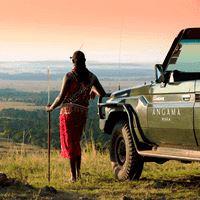 Kenya offers an enriching cultural and historical experience for Dutch travelers who enjoy diving into the past and exploring diverse traditions. With its layered history shaped by indigenous communities, Arab traders, European explorers, and colonial powers, Kenya is a treasure trove of heritage that fascinates every curious visitor. A must-see is the Karen Blixen Museum in Nairobi, once the home of the author of "Out of Africa." This colonial farmhouse is filled with period furniture, photographs, and memorabilia that take you back to the early 20th century. The lush garden and sweeping views of the Ngong Hills make it even more memorable. In Mombasa, Fort Jesus stands as a powerful reminder of the country’s Portuguese and Arab past. This UNESCO World Heritage Site features cannons, ancient artifacts, and maze-like corridors that bring to life centuries of seafaring trade and conflict on the East African coast. Not far from Nairobi, the Bomas of Kenya offers a journey into the traditional lifestyles of the country’s diverse ethnic groups. Visitors can experience authentic performances of tribal music and dance and explore replicas of traditional homesteads from different communities. For a deeper dive into the nation’s legacy, consider exploring lesser-known but equally fascinating sites such as the Railway Museum in Nairobi, the coastal ruins of Gede, or the sacred Kaya Forests of the Mijikenda people. These locations reflect Kenya’s multifaceted identity and the complex interplay of tradition and transformation. All of these places contribute to the richness of Kenya cultural heritage sites for Dutch history lovers, offering meaningful and educational encounters with the country’s soul. These experiences go beyond the surface, allowing travelers to gain insight into the historical currents that have shaped the nation. From pre-colonial African societies and centuries of coastal trade to colonial-era struggles and post-independence development, each site offers a unique perspective. The Karen Blixen Museum is more than a preserved colonial home it is a lens into the colonial past and its interaction with the local Kikuyu community. Fort Jesus, on the other hand, reveals centuries of European and Arab influence along the Swahili Coast, where global trade routes once converged. The Bomas of Kenya connects visitors to living traditions that continue to define Kenya’s ethnic communities today. These spaces create an immersive narrative, helping Dutch history enthusiasts understand how culture, migration, and resistance have shaped modern Kenya. Exploring these heritage sites fosters a sense of connection between visitor and place. Dutch travelers often find parallels between their own colonial history and that of Kenya, leading to deeper reflection and appreciation. By walking through these spaces, observing artifacts, and engaging with local guides, Dutch visitors enrich their understanding of a country that is both proud of its past and hopeful for its future.
Kenya offers an enriching cultural and historical experience for Dutch travelers who enjoy diving into the past and exploring diverse traditions. With its layered history shaped by indigenous communities, Arab traders, European explorers, and colonial powers, Kenya is a treasure trove of heritage that fascinates every curious visitor. A must-see is the Karen Blixen Museum in Nairobi, once the home of the author of "Out of Africa." This colonial farmhouse is filled with period furniture, photographs, and memorabilia that take you back to the early 20th century. The lush garden and sweeping views of the Ngong Hills make it even more memorable. In Mombasa, Fort Jesus stands as a powerful reminder of the country’s Portuguese and Arab past. This UNESCO World Heritage Site features cannons, ancient artifacts, and maze-like corridors that bring to life centuries of seafaring trade and conflict on the East African coast. Not far from Nairobi, the Bomas of Kenya offers a journey into the traditional lifestyles of the country’s diverse ethnic groups. Visitors can experience authentic performances of tribal music and dance and explore replicas of traditional homesteads from different communities. For a deeper dive into the nation’s legacy, consider exploring lesser-known but equally fascinating sites such as the Railway Museum in Nairobi, the coastal ruins of Gede, or the sacred Kaya Forests of the Mijikenda people. These locations reflect Kenya’s multifaceted identity and the complex interplay of tradition and transformation. All of these places contribute to the richness of Kenya cultural heritage sites for Dutch history lovers, offering meaningful and educational encounters with the country’s soul. These experiences go beyond the surface, allowing travelers to gain insight into the historical currents that have shaped the nation. From pre-colonial African societies and centuries of coastal trade to colonial-era struggles and post-independence development, each site offers a unique perspective. The Karen Blixen Museum is more than a preserved colonial home it is a lens into the colonial past and its interaction with the local Kikuyu community. Fort Jesus, on the other hand, reveals centuries of European and Arab influence along the Swahili Coast, where global trade routes once converged. The Bomas of Kenya connects visitors to living traditions that continue to define Kenya’s ethnic communities today. These spaces create an immersive narrative, helping Dutch history enthusiasts understand how culture, migration, and resistance have shaped modern Kenya. Exploring these heritage sites fosters a sense of connection between visitor and place. Dutch travelers often find parallels between their own colonial history and that of Kenya, leading to deeper reflection and appreciation. By walking through these spaces, observing artifacts, and engaging with local guides, Dutch visitors enrich their understanding of a country that is both proud of its past and hopeful for its future.
Top Cultural Experiences and Historic Places in Kenya to Explore
For Dutch adventurers who enjoy discovering unique, lesser-known destinations, Kenya offers a wealth of hidden cultural and historic treasures. While the Masai Mara and the coastal beaches are well-trodden tourist paths, there are many gems that remain off the radar, promising deeper and more personal experiences. These places bring to life the many layers of Kenya’s history, from ancient civilizations and colonial legacies to living traditions that thrive in the present. Start your journey in the central highlands with a visit to Nyeri, the final resting place of Lord Baden-Powell, the founder of the Scouting movement. This quiet town also boasts the Mau Mau caves in the nearby forests, where Kenyan freedom fighters hid during the struggle for independence. The combination of colonial memory and liberation history provides a compelling narrative for history lovers. Travel further to the Taita Hills, where sacred forests and historical sites reveal centuries of spiritual significance and resistance against colonial rule. Local guides tell stories of ancestral rituals and the landscape's deep cultural meaning. These lush hills offer not just history, but beautiful hiking and panoramic views. Venture to the north and explore Marsabit and Loiyangalani. The Marsabit National Park is surrounded by volcanic hills and is home to desert-adapted wildlife. In Loiyangalani on the shores of Lake Turkana, visitors can witness the traditions of the El Molo and Turkana communities, which have survived in one of the harshest environments in Africa. Their cultures are rich in oral storytelling, distinctive crafts, and ancient fishing practices. In western Kenya, the town of Kisumu sits on the shores of Lake Victoria and offers attractions like the Kisumu Museum and Kit Mikayi a towering rock formation surrounded by Luo legends. These lesser-visited sites allow travelers to connect with local stories that go far beyond guidebook descriptions. Then there's the Thimlich Ohinga archaeological site in Migori County, a UNESCO-listed complex of dry-stone enclosures believed to be more than 500 years old. The site offers insight into early forms of community organization and defense among the Luo-speaking people. All these lesser-known places reflect Kenya's incredible cultural diversity and historical richness. They reward those who step away from the main trail with authentic connections, deep stories, and unforgettable landscapes. These are Kenya's top hidden gems for Dutch adventurers seeking something more meaningful than the typical tourist itinerary.
FAQs About Must-See Attraction Sites in Kenya for Dutch Tourists
Kenya is a captivating destination for Dutch tourists eager to explore Africa's wildlife, coastlines, and cultural richness. With direct flights and a welcoming atmosphere, the country is increasingly popular among travelers from the Netherlands. To help plan the perfect itinerary, here are answers to common voice search-friendly questions Dutch travelers often ask when considering a trip to Kenya.
- What Are the Best Months for a Safari in Kenya? The ideal time for a safari is during the dry seasons, from June to October and again from January to February. Wildlife viewing is best when animals gather around water sources, especially during the Great Wildebeest Migration in the Masai Mara.
- Where Can I See the Big Five Animals in Kenya? You can see the Big Five lion, leopard, elephant, buffalo, and rhino in parks like the Masai Mara, Amboseli, and Tsavo. These parks have well-organized game drives and experienced guides who help visitors safely spot and learn about these iconic animals.
- Which Kenyan Beaches Are Great for Relaxing? Diani Beach and Watamu are top choices. Diani offers long stretches of white sand and water sports, while Watamu is ideal for snorkeling and diving. Both locations provide a peaceful coastal escape with easy access from Mombasa or Nairobi.
- Is Kenya a Safe Destination for Dutch Tourists? Yes, Kenya is generally safe for tourists, especially in designated travel zones and national parks. Travelers should follow safety advice from local guides, use registered tour operators, and stay updated on travel advisories.
- What Cultural Sites Should I Visit in Kenya? Cultural highlights include the Karen Blixen Museum in Nairobi, Fort Jesus in Mombasa, and the Bomas of Kenya. These sites showcase colonial history, traditional music and dance, and Swahili and Arab influences along the coast.
- Can I Combine Safari and Beach Holidays in Kenya? Absolutely. Many Dutch tourists combine a few days on safari with time at the beach. After exploring the Masai Mara or Samburu, you can unwind on the shores of Diani or Lamu, enjoying both adventure and relaxation in one trip.
